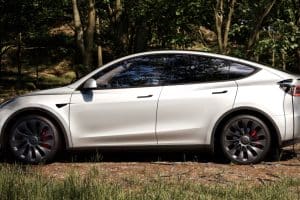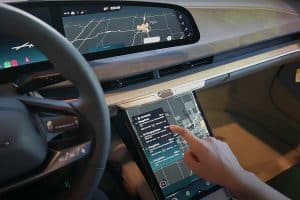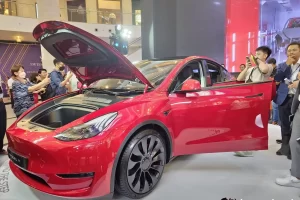- 🚛 California has released its first draft regulations for autonomous semi-trucks, with Tesla and others actively developing this technology.
- 🛣️ The draft covers self-driving Class 8 trucks on highways, requiring safety drivers to start and seeking public feedback.
- 📜 The draft legislation comes after California Assembly’s approval of two autonomous driving safety bills, pending Governor Newsom’s decision.
- 🤖 Concerns are raised about potential job losses due to automation, as seen in Teamsters’ criticism of the regulations.
- 🏭 Tesla is building a facility in Nevada for its electric Semi production and expects to integrate Full Self-Driving (FSD) capabilities.
- 🚗 Tesla’s approach to FSD differs from competitors by leveraging an AI neural network applicable everywhere, rather than pre-mapped roads.
- 🚖 Tesla plans to unveil a robotaxi platform in October, further expanding its autonomous vehicle offerings.
Embracing a New Era in Transportation
The state of California has embarked on a groundbreaking journey with the release of its first draft regulations for autonomous semi-trucks. This development marks a pivotal moment for the transportation industry, as major players like Tesla and others continue to make significant strides in self-driving technology. In this comprehensive blog post, we will explore the implications of these regulations, the technological advancements fueling this revolution, and the potential impact on employment and society at large.
California’s Autonomous Trucking Regulations
California has unveiled its initial draft of regulations concerning the operation of autonomous semi-trucks on state highways. This comprehensive framework targets Class 8 trucks, which are typically used for long-haul transportation. The state has stipulated that safety drivers will be required during the initial phases of implementation, thereby emphasizing the importance of public safety while allowing technological development to proceed.
Feedback and Legislative Context
These draft regulations coincide with the California Assembly’s approval of two autonomous driving safety bills. These legislative measures are now in the hands of Governor Gavin Newsom, who has the authority to enact them into law. The California Department of Motor Vehicles (DMV) is open to feedback on these proposals, providing a crucial window for public and industry input up to October 14.
Balancing Safety and Innovation
One of the primary goals of these regulations is to ensure that the transition to autonomous trucking is as seamless and secure as possible.
Safety Measures
- Implementation of safety drivers during initial stages
- Gradual integration of autonomous technologies to ensure adaptability and safety
- Continuous evaluation based on data and feedback
Technological Advancements Driving the Change
The introduction of autonomous trucks represents a seismic shift in transportation technology. Tesla, with its burgeoning array of self-driving innovations, is at the forefront of this movement.
Tesla’s Full Self-Driving Capabilities
Tesla’s approach to Full Self-Driving (FSD) technology is notably distinct from its competitors. Rather than relying on pre-mapped roads, Tesla harnesses a sophisticated AI neural network that allows vehicles to operate efficiently in diverse and unmapped terrains. This scalability is projected to offer substantial advantages over competitors like Waymo and Cruise, who operate within geographically restricted areas.
Economic and Employment Impacts
While the technological prospects are promising, there are concerns about the economic and employment ramifications, particularly regarding job displacement.
Job Displacement Concerns
The advent of autonomous trucking has raised alarms about potential job losses, particularly from labor organizations like the Teamsters. These groups highlight the possibility that traditional driving roles might gradually diminish as companies transition to self-driving systems.
Future Prospects: A Broader Horizon
Looking ahead, Tesla is not just focusing on autonomous semi-trucks. The company also plans to unveil a comprehensive robotaxi platform in October, further demonstrating its commitment to a future where self-driving vehicles are an integral component of urban mobility.
Conclusion: A Road Towards the Future
California’s draft regulations for autonomous trucking signify a monumental step towards a future dominated by autonomous vehicles. While the journey is fraught with challenges – particularly concerning safety and employment – the potential benefits in terms of efficiency, safety, and innovation are immense. As we move forward, the conversation around autonomous trucking will continue to evolve, demanding vigilance, adaptability, and cooperation among stakeholders.





